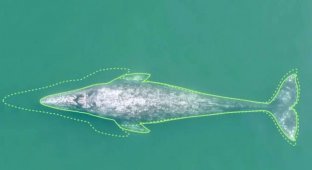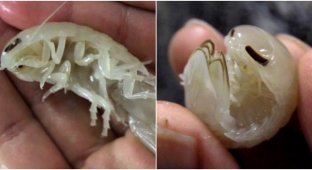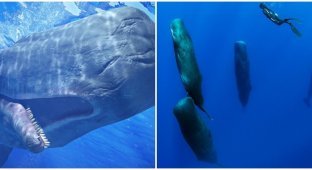Omura's minke whale: a rare and poorly studied species of whale (8 photos)
If you think that all the nature on the planet has already been studied, then you should learn about whales, which were discovered relatively recently. 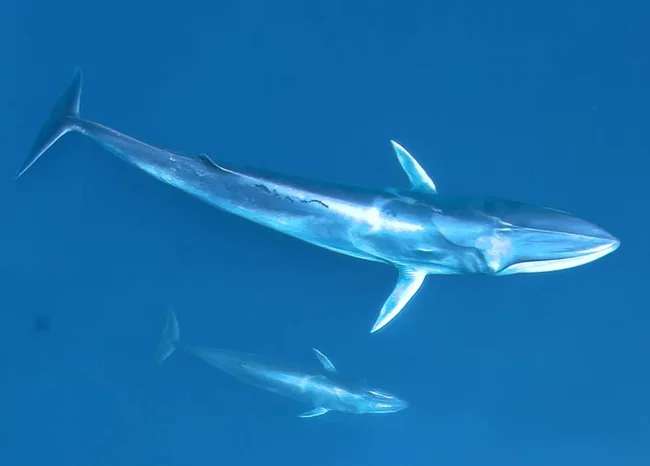
- Mom, do people know much about us? - So far, they don’t even know that we exist. And that’s very good!
There is one whale in the adjacent regions of the Indian and Pacific Oceans - the Omura’s fin whale. It has a wide range, and the population numbers thousands of individuals. By whale standards, they are frankly small: only 9-11 meters long at an adult age. And yet they were only discovered in 2003! In this regard, the question arises: how did scientists miss an entire species of huge mammals?
They didn't miss them. It's just that no one cared. The Japanese, big fans of whaling, caught baleen whales by the dozens back in the 20th century. The Filipinos hunted these whales for centuries and collected their skulls. But neither the whalers, nor the scientists sent to them, nor the researchers of the Philippines noticed the anomaly in the structure of the skulls of these animals. 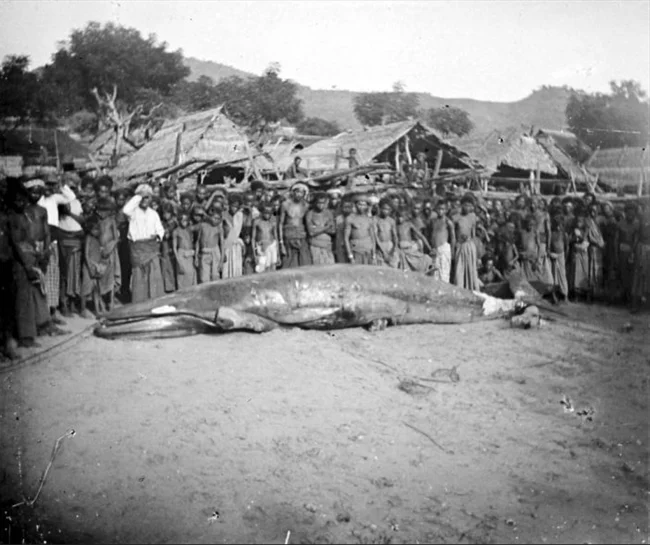
Photo of a baleen whale next to the residents of the village of Lamakera, Indonesia. The photo was taken sometime between 1913 and 1944.
It wasn't until 1976 that a Japanese cetologist (a whale researcher) named Osura noticed the unusual jaw and temporal bone structure of 6 whales he had caught. He carefully documented the anomalies and sent a report to the scientific department of the International Whaling Commission. And guess what those scientists did? Nothing! Instead of funding research that would help them learn more from the clue, they simply called our heroes a local dwarf form of Bryde's whale. And that's a completely different species of sea creature. 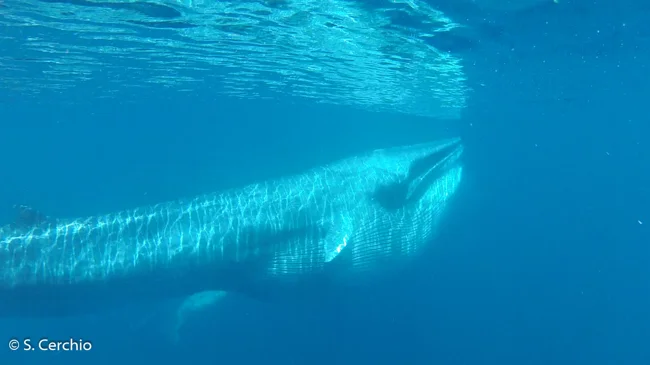
An ordinary dwarf with an average body length of 9 meters, nothing special.
For 22 years, Omura's minke whales swam in the oceans under a false name. A tragic event helped restore justice. In 1998, a female minke whale collided with a fishing boat in the Sea of Japan. She died suddenly, after which she was towed to the port of Tsunoshima Island. The body was examined not by an ordinary employee, but by Tadasu Yamada, head of the mammal department at the National Museum of Nature and Science, the largest natural science museum in the country. He suspected something was wrong, after which he ordered a full osteological examination and genetic analysis of the remains. 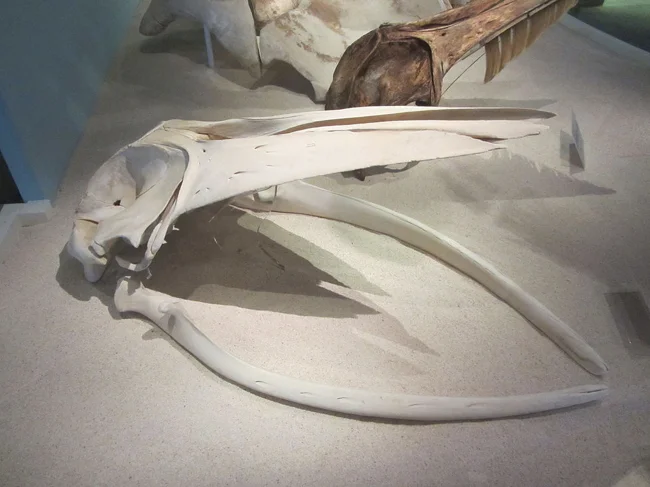
The very skull that Tadasu noticed.
5 years of hard work, and on November 20, 2003, an article was published in Nature, which collected all the evidence that minke whales are an independent species. Moreover, Omura's minke whales are genetically closer to giant blue whales, and not to Bryde's whales. Some external similarities between these two species are caused by adaptation to similar ecological niches, and not family ties. 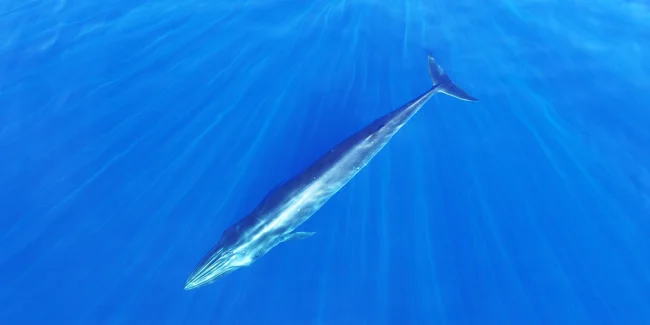
Bryde's whale in all its glory. Find 10 differences.
Because the minke whales have been hiding under pseudonyms for 27 years, humanity has faced two scientific problems at once.
We have a whole species of multi-ton plankton-eating creatures right next to us that no one knows anything about.
Information about Bryde's whales is "infected" with data about Omura's minke whales. And now scientists need to spend years of work to separate one from the other. 
Unfortunately, Omura's minke whales periodically wash ashore. In this respect, they are no different from other whales.
It has been 21 years since the discovery of the new species, but our knowledge of this whale species can still be summarized in 3 paragraphs. Omura's minke whales, like other baleen whales, feed exclusively on krill and small fish. They stay alone at depths of up to 100 meters, but occasionally gather in schools of up to 12 individuals. The reasons for such flash mobs are still unknown. 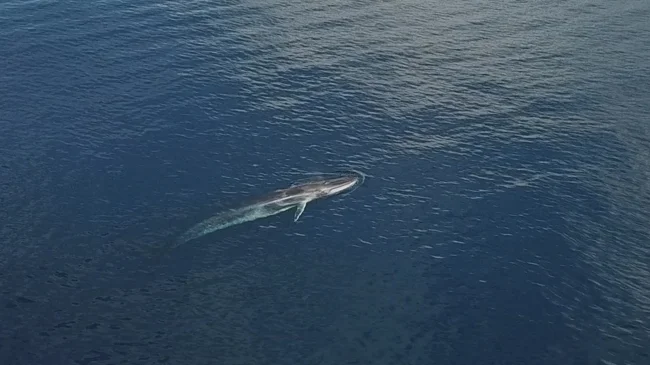
Guys, is anyone here?
Ribbon whales are big homebodies, but their home is not small. Research from 2011-2017 shows that they almost never leave their personal domains with a diameter of 200-400 kilometers. However, these territories can be called domains conditionally. The animals do not try to protect their borders and willingly share waters with other whales. 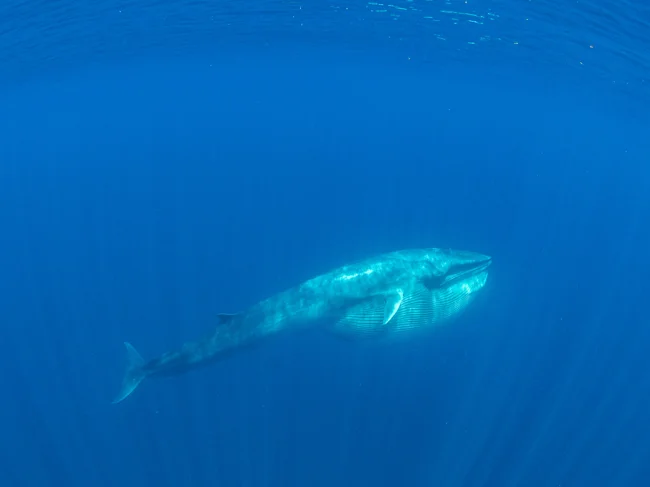
He stuffed his cheeks full of krill and swims contentedly.
Their social life is a mystery shrouded in darkness. These whales have their own dedicated communication line, they communicate with each other at frequencies of 15-31 Hz, which is almost inaudible to the human ear. Usually, krill eaters are not very sociable, but from January to October and from May to June they can sing up to 13 hours a day. The reasons for sudden bouts of sociability are still unknown.
Perhaps it is all about mating games, but we know nothing about them at all. It is known for sure that minke whales give birth from August to November. But the timing of pregnancy, the criteria for choosing partners and other internal secrets remain a mystery shrouded in darkness.












